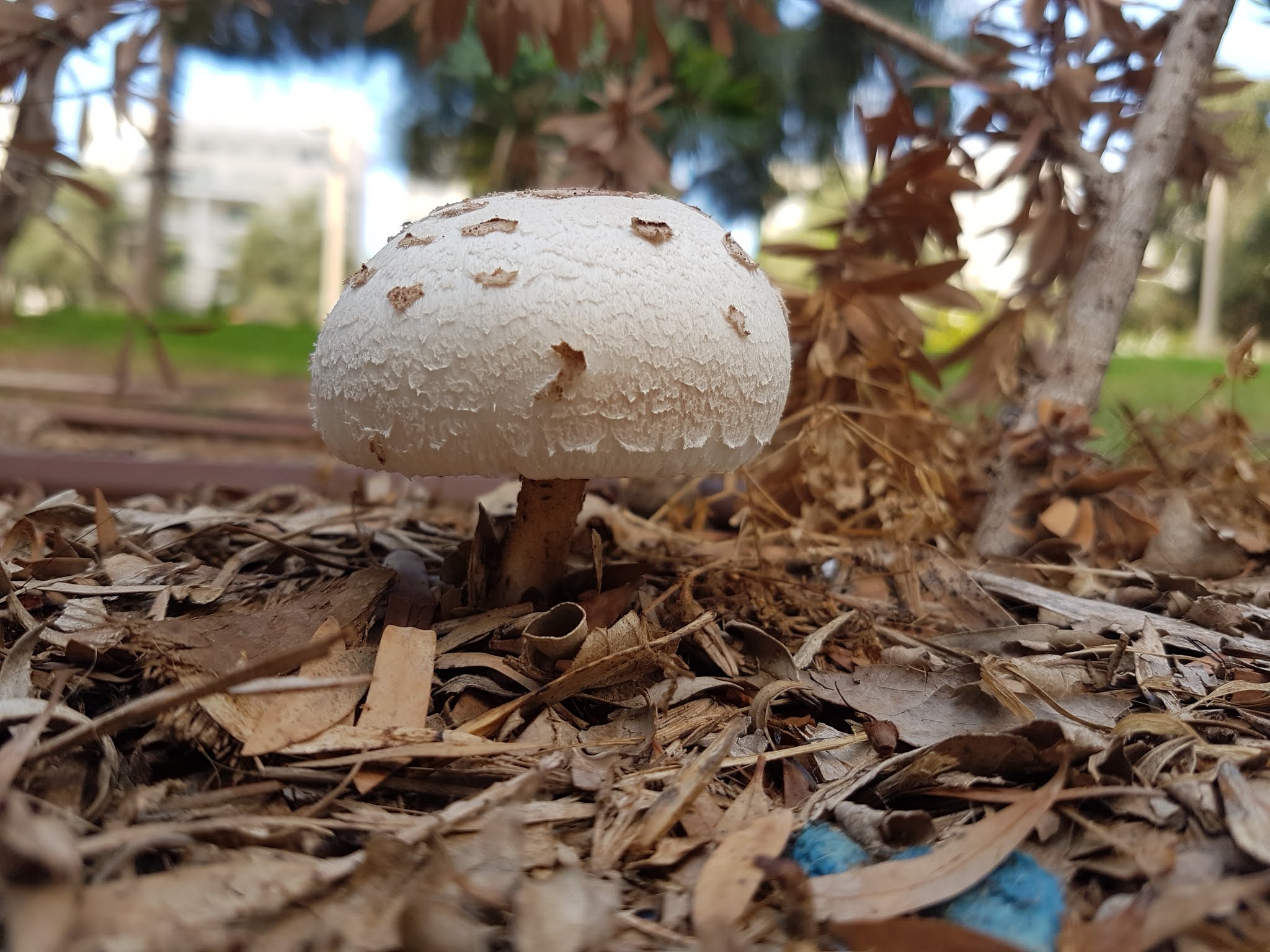The next Great Depression
August 20, 2017Israel’s struggle against pollution could mean a new kind of Great Depression
Earlier this year we marked World Health Day 2017. The theme of this year’s campaign is “Depression: Let’s Talk.”
Depression disorders often start at a young age; they reduce people’s functioning and often are recurring. According to the World Health Organization (WHO), depression is the leading cause of disability worldwide in terms of total years lost due to disability.
People normally associate depressive disorders with personal and social circumstances, or sometimes look to biology and genetics; but it is now being revealed that the environment has a strong effect, too.
“The social and physical environments are linked, as much as our mental and physical health,” says Dr. Hagai Levine, head of the environmental health track at the Hebrew University-Hadassah Braun School of Public Health and Community Medicine.
In a sense, depression is a pervasive illness spread across the world, which can affect us all – similar to the threat of environmental pollution. Urbanization exacerbates this threat since it brings with it risks of increased exposure to light, air and noise pollution. With 92% of Israelis now living in urban areas, there is increasing concern about the health burden facing us.
The invisible enemy
Air pollution is the primary environmental stressor in relation to cardiovascular morbidity and mortality, but growing evidence suggests that living under oppressive pollution also exacts a severe psychological toll.
In terms of air pollution rankings, Israel (ranked 62nd) is sandwiched in an unfavorable place between Syria and Sri Lanka, far behind the majority of European countries and out of sight of the leading Scandinavian countries.
Environmental pollutants, such as particulate matter, have been linked to neuroinflammation and may affect the blood-brain barrier, increasing the potential for detrimental health effects, including depression.
The hippocampus is the region of the brain most vulnerable to pollution, due to its high sensitivity, and its physical structure can be harmed by long-term exposure to air pollution.
According to the American Psychological Association provocative publication “Smog in our brains,” there is mounting evidence that “dirty air is bad for your brain.” It is the people living in Israel’s major cities that are most exposed to air pollution and at greatest risk. /
Or e.g. The people most exposed to air pollution such as those living in Israel’s major cities are at greatest risk.
Clinical research shows a connection between air pollution and behaviors associated with depression. For example, mice exposed to polluted air in laboratory studies demonstrate the rodent equivalent of “behavior despair” – giving up swimming more quickly in a forced swim test and stopping to sip sugar water that they normally find attractive.
Meanwhile, researchers at Duke University found that pregnant mice exposed to diesel exhaust had offspring that exhibited increased anxiety. Depression and anxiety often go hand in hand, and the results can be debilitating.
Unfortunately, Israel is by no means immune to this epidemic.

A modern-day nightmare
One of the defining characteristics of life in our modern world is the alteration in the natural pattern of light and darkness, an alteration made possible by the use of electric power. For most of us, stargazing is something we can do only at our nearest planetarium. Most of Israel’s cities are awash in electric light, but this energy stream could also be drowning its citizens in depression.
When artificial outdoor lighting becomes inefficient, annoying and unnecessary, it is known as “light pollution.” Common sources include streetlights and electronic billboards found in residential and urban areas, which succeed in lighting up the night sky but may also be shutting down our minds in disturbing ways.
According to the report, “Influence of the modern light environment on mood,” published by Ohio State University Medical Center, /
Ohio State University Medical Center’s publication, “Influence of the modern light environment on mood,” explains that
exposure to artificial light at night has “surged in prevalence during the past 50 years, coinciding with rising rates of depression.” As explained by the National Institute of Health, exposure to the artificially extended daytime of our lighted modern world can lead to the “desynchronization” of our internal rhythms, which not only impairs our body clock (circadian clock) but also leaves us at a greater risk of suffering from depression.
Melatonin, the “sleepy hormone,” is released when the sun sets and is suppressed when the sun rises, while cortisol (a stress hormone that increases blood pressure) peaks in the morning and is suppressed at night. Artificial light exposure at night inhibits melatonin production but promotes elevated cortisol levels, which brings stressful and anxious feelings that can fuel cyclical depression.
Light-emitting diodes (LEDs) are of particular concern, since they emit a large amount of blue light – the wavelength that enriches the suppression of melatonin and the disruption of circadian rhythms. Glare is known to cause damage to retinal cells, especially in the eyes of children, but high intensity LED street lights also emit enough blue light to have a five times greater impact on circadian rhythm than conventional street lamps. Next time you climb into bed after a long day’s work, check to see if dim light from streetlights, passing traffic or a television is trespassing into your bedroom.
There are several recommendations for reducing light pollution, which include selecting bulbs with a color temperature of 3,000 Kelvin (K) or less, using lights with blue blocking coatings on the inside of the LED, purchasing compact fluorescent bulbs and using available smart lighting technology, in addition to turning off other sources of digital light, such as computers. All these measures can help to restore circadian rhythms to optimal functioning, while reducing energy use, saving money and shrinking our carbon footprint.
Peace and quiet in a greener Middle East
Noise, defined as “unwanted sound,” has gradually become increasingly acknowledged as an environmental stressor and a nuisance. Noise pollution, along with air and light pollution, is one of the fastest-growing and most pervasive forms of environmental pollution. In urban populations habitually exposed to high levels of noise, annoyance is the most prevalent community response. However, constant frustration can gradually plant the seeds of depression.
Noise annoyance can result from interference with daily activities, feelings, thoughts, sleep, or rest, and may be accompanied by negative emotional responses, such as irritability, distress, exhaustion, a wish to escape the noise and other stress-related symptoms. Anxiety and depressive disorders are more prevalent in people living within the vicinity of highways, airports and other noise-intensive zones. Once exposure to noise becomes chronic and exceeds safe levels, several adverse health effects can manifest.
Numerous reports from WHO have already documented the risk of developing high blood pressure and heart disease from noise pollutants, but now mental-health risks are being observed, too. According to the International Commission on Biological Effects of Noise, “Adults who indicated chronic severe annoyance by neighborhood noise were found to have an increased risk of depression as well as migraine.” Recent figures published by WHO calculate that at least one million healthy life years are lost each year from traffic-related noise in Western Europe, with a loss of 903,000 years due to sleep disturbance, 654,000 years due to annoyance and perhaps many more for depression.
Combined effect, holistic approach
The health impacts of environmental noise present a growing health concern, which may be interacting with other pollutants, such as air and light pollution, in a synergistic way when it comes to depression.
The restorative function of quiet areas, green space, and other noise barriers can offer sanctuary from the onset of depressive symptoms. As the University of Washington’s “Green Cities: Good Health” report highlights/stresses, “the value of green spaces is relevant to treating depression symptoms.”
“A holistic approach to urban planning, taking into account the broad impact on health and the environment, including on our mental health, would bring better health for us,” concludes Dr. Levine.
While the burden of disease and depression from sources of pollution remains a major challenge facing the Israeli population, there is a sense of urgency to examine environmental conditions, not just social settings, if we are to alleviate the threat of a new kind of “Great Depression”.
This ZAVIT article was also published in the Jerusalem Post on 4/27/2017







